
Whether you're a seasoned gardener or just starting out, you’ve likely encountered the wide variety of leafy greens that can thrive in your garden. These greens not only provide a healthy and delicious addition to your meals but also enhance the aesthetic appeal of any garden space. With so many options available, selecting the right leafy green for your garden might seem overwhelming. To make this decision easier, here’s an in-depth look at popular greens such as lettuce, spinach, beet tops, chard, and kale, offering guidance to help you choose the best fit for your garden.
Lettuce is a versatile and low-maintenance leafy green that comes in a wide variety of forms, sizes, and colors. It is primarily categorized into four distinct types, each with unique characteristics that make it suitable for various culinary and gardening preferences.
Romaine lettuce features long, sturdy leaves with a slightly bitter, crunchy texture, making it a great choice for salads or as a healthy wrap for sandwiches. Gardeners can choose from numerous romaine lettuce varieties, each offering unique traits. Here are some popular options:
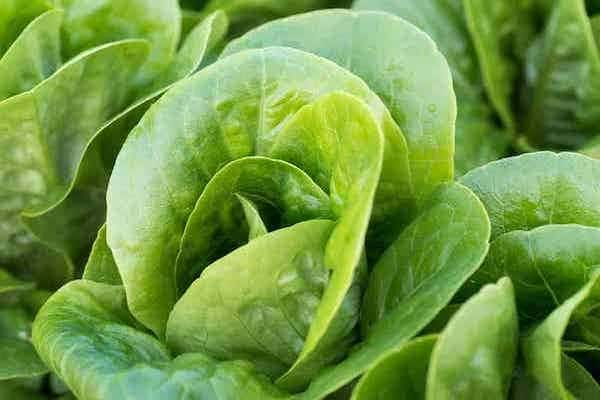
Time of Year to Plant: Romaine lettuce is a cool-season crop that thrives in temperate climates with mild temperatures. It grows best when planted in spring or fall, as these seasons offer the most favorable conditions. In temperate zones, sow lettuce seeds 4-6 weeks before the last expected frost in spring to give the plants time to sprout and stabilize before warmer weather arrives. For a fall harvest, plant seeds 6-8 weeks before the first expected frost, allowing them to mature before the onset of colder temperatures. Romaine lettuce prefers full sun to partial shade and well-draining soil with a pH between 6.0 and 7.0. Maintaining consistent soil moisture throughout the growing season is essential for healthy growth and maximum yield.
Suggested Fertilizers: Proper fertilization is vital for growing robust romaine lettuce. A balanced chemical fertilizer with an N-P-K ratio of 10-10-10 works well when applied at planting and mid-season, following package instructions. Organic options like compost, aged manure, or fish emulsion enrich the soil with essential nutrients while improving its fertility and drainage. Avoid over-fertilizing, as it may lead to excessive growth and reduced leaf quality. Conduct periodic soil tests to identify nutrient deficiencies and adjust your fertilization strategy accordingly. With the right fertilizers and care, your romaine lettuce will thrive, providing abundant, nutrient-rich leaves.
Days to Maturity: Romaine lettuce requires consistent sunlight, ideally 6-8 hours daily, for healthy development. Depending on the variety, it matures within 45 to 85 days. Early-maturing types like Little Gem grow faster, while larger varieties such as Parris Island Cos may take longer. Check seed packets or labels for specific maturity timelines to ensure timely harvests. With proper sunlight and attention to variety requirements, you can enjoy crisp, fresh romaine lettuce from your garden.
Regrow Capability: Romaine lettuce can regrow after harvesting, making it an excellent option for continuous yields. Leave 1-2 inches of the stem and some inner leaves intact when harvesting to encourage regrowth. Use sharp tools to minimize damage, and keep the plant well-hydrated post-harvest. New leaves will emerge within weeks, allowing you to enjoy multiple harvests of fresh, delicious lettuce throughout the growing season.
Sweet to Bitterness Scale: Romaine lettuce is mildly bitter, but growing conditions significantly influence its taste. Cooler temperatures and consistent watering yield sweeter lettuce, while heat and uneven moisture can increase bitterness. Selecting sweeter varieties and harvesting promptly helps minimize bitterness, ensuring flavorful, crisp leaves for your meals.
Preferred Soil: Romaine lettuce thrives in well-draining, nutrient-rich soil with a pH between 6.0 and 7.0. Sandy loam is ideal for its balance of drainage and moisture retention. Enhance your soil with compost, well-rotted manure, or peat moss to improve fertility. Avoid heavy clay soil, as it can cause waterlogging and hinder root development. Amendments like perlite or vermiculite can boost aeration and drainage, ensuring optimal conditions for healthy growth.
Typical romaine lettuce plants grow to about 10-12 inches in height and 6-8 inches in width. Larger varieties like Parris Island Cos can reach up to 18 inches tall, while compact options like Little Gem stay around 6-8 inches, making them perfect for containers or small gardens. Choose the variety that suits your space and needs for a rewarding harvest.
Average Number of Leaves per Plant: Romaine lettuce typically produces 12-16 long, crunchy leaves per plant, measuring 7-9 inches in length. Packed with vitamins A, C, and K, folate, and potassium, these leaves are a nutritious addition to your meals. Low in calories and high in fiber, romaine lettuce supports healthy digestion and weight management, making it an excellent dietary choice.
Potential Seed Production per Plant: Once romaine lettuce bolts and flowers, it can produce hundreds of seeds. Small and light beige to brown in color, these seeds are housed in pods on the plant's stem. Lettuce grown for seeds should be separated from those intended for consumption, as seed production often makes leaves bitter. Harvest these seeds for future plantings to enjoy a continuous supply of lettuce.
Soft lettuce varieties are known for their tender leaves and mild flavor. Popular types include Boston and Bibb, which feature loose heads and delicate textures. Other favorites include Buttercrunch and Tom Thumb, known for their compact growth, and Nancy, which boasts exceptional sweetness. These varieties are excellent for salads and versatile in the kitchen, making them a valuable addition to any garden.
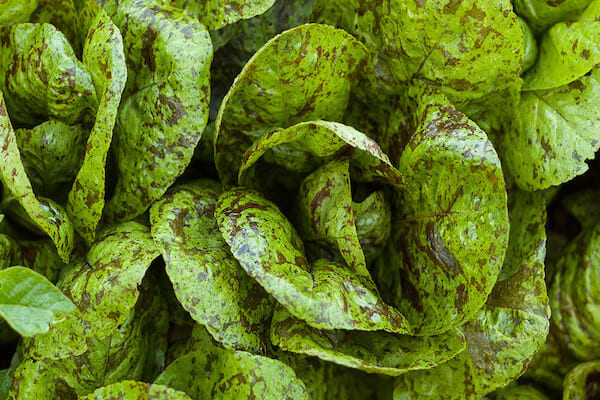
Best Time of Year to Plant: Butterhead lettuce, a cool-season crop, thrives in mild temperatures and is best planted in spring or fall. You can sow seeds directly into the garden or start them indoors, depending on your local climate and gardening preferences.
For spring planting, sow butterhead lettuce seeds 4-6 weeks before the last expected frost. Starting seeds indoors can give you an earlier harvest and protect young seedlings from unexpected frosts. Transplant seedlings into the garden once they have developed two true leaves and the frost risk has passed. To ensure a continuous harvest, plant seeds every 2-3 weeks throughout the spring growing season.
For fall planting, sow seeds 6-8 weeks before the first expected frost. Butterhead lettuce planted in fall often has a sweeter flavor due to cooler temperatures and shorter days. In regions with mild winters, you can plant seeds throughout the fall and even into winter for an ongoing harvest.
Nursery transplants are also a great option for planting butterhead lettuce. They can be planted in the garden after the frost risk has passed in spring or during the ideal fall planting window. Space transplants 8-12 inches apart to allow for optimal growth and air circulation.
Regardless of the method, ensure butterhead lettuce receives adequate water, sunlight, and nutrients for healthy growth and a plentiful harvest.
Fertilizers: Fertilizing butterhead lettuce is essential for robust growth and an abundant harvest. Nitrogen is particularly important for leafy greens as it promotes healthy leaf development and vibrant color. Phosphorus and potassium also support root development and overall plant health.
Apply a balanced, slow-release granular fertilizer or liquid fertilizer with a high nitrogen content at planting time. Follow the manufacturer’s application instructions for best results. Organic fertilizers like compost or aged manure also improve soil fertility and structure. For hydroponic setups, use a nutrient solution specifically formulated for leafy greens, ensuring it contains an optimal balance of macro and micronutrients. Regularly monitor the pH and nutrient levels in hydroponic systems to maintain ideal growing conditions.
Number of Days to Maturity: Butterhead lettuce typically takes 60-75 days to mature from seed or 50-60 days from transplants, depending on the variety. Full sun to partial shade is ideal, requiring a minimum of 6 hours of sunlight daily. In hot climates, afternoon shade can help prevent bolting and maintain the lettuce’s tender flavor.
Consistent watering is also crucial, as butterhead lettuce has shallow roots. Aim for 1-1.5 inches of water per week, and supplement with irrigation during dry spells. Properly managing sunlight, water, and growing conditions will result in a healthy, flavorful harvest.
Cut-and-Regrow Capability: Butterhead lettuce has the unique ability to regrow after harvest. Use the cut-and-come-again method by harvesting the outer leaves about 1 inch above the base, leaving the central growing point intact. This allows the plant to produce new leaves within 1-2 weeks, extending the harvest period.
Continue to water, fertilize, and provide proper care for the plant to encourage vigorous regrowth. Although the secondary growth may not be as abundant as the initial one, this method ensures multiple harvests from the same plant, reducing the need for replanting.
Soil: Butterhead lettuce grows best in well-draining, nutrient-rich soil with a pH between 6.0 and 6.8. Sandy loam is ideal as it retains moisture while allowing excess water to drain. To improve soil fertility, incorporate organic matter such as compost or well-rotted manure, which enhances nutrient availability and structure.
Amendments like peat moss can help improve soil texture and moisture retention, while perlite or vermiculite enhances aeration and drainage. Conduct a soil test to ensure optimal pH levels, and make adjustments as needed using lime or sulfur. Crop rotation can also prevent nutrient depletion and soil-borne diseases, ensuring healthy growth year after year.
Plant Size: Butterhead lettuce typically grows to about 6-8 inches in diameter and 4-6 inches in height. Harvest the lettuce before it bolts, as this can cause the leaves to become bitter and tough.
Leaves and Seeds: Butterhead lettuce is known for its tender, buttery-textured leaves, arranged loosely to form an open, rounded head. A single plant produces a mix of larger outer leaves and smaller, tightly packed inner leaves, making it visually appealing and practical for continuous harvesting.
Once mature, the plant flowers and produces small, daisy-like blooms that give way to seed pods. Each plant can produce hundreds of seeds, ensuring an ample supply for future planting. Properly harvested and stored, butterhead lettuce seeds can remain viable for several years.
Unlike head lettuce, loose leaf varieties don’t form a compact head, offering a range of colors and textures. Popular varieties include Black Seeded Simpson, Oak Leaf, Lollo Rossa, Red Sails, and Salad Bowl. These versatile options are ideal for traditional gardens and container planting, providing quick growth and an ongoing supply of fresh greens.
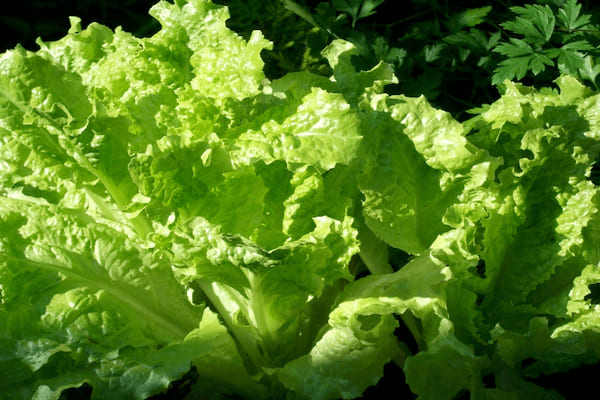
Time to Sow Seeds: Loose-leaf lettuce thrives in cool seasons, making spring and fall the best times to plant. Sow seeds 4-6 weeks before the last frost for a spring harvest or 6-8 weeks ahead of the first frost for an autumn yield. Loose-leaf lettuce seeds are small, oval, and flat, measuring about 2-3 mm. Use the broadcasting method to scatter them evenly across the soil surface, ensuring adequate space for growth. This versatile variety is a great option for gardeners seeking a fast-growing and straightforward addition to their garden.
Fertilizing: Fertilizing loose-leaf lettuce ensures optimal growth and a bountiful harvest. Choose between artificial fertilizers, like those with a balanced N-P-K ratio, and natural fertilizers such as compost, aged manure, or fish emulsion. Apply fertilizer at the start of the growing season and reapply as needed to maintain plant health. Loose-leaf lettuce typically matures in 35-55 days, depending on the variety and growing conditions. It requires consistent sunlight (20-30 days) and moisture (10-15 days of rainfall or irrigation) to thrive.
Days to Harvest: Loose-leaf lettuce can regrow after being harvested, making it an excellent choice for continuous production. Trim the leaves 1-3 inches above the soil, leaving the stem and some foliage intact to stimulate regrowth. Proper hydration ensures new leaves appear within 1-2 weeks. A shorter cut may result in fewer leaves, while a longer cut encourages greater harvest potential.
Coppicing: Loose-leaf lettuce is known for its mild, slightly sweet flavor. The sweetness can vary based on the variety and growing conditions. Cooler temperatures and consistent moisture enhance sweetness, while warmer conditions can increase bitterness. With proper care, this lettuce makes a delightful addition to summer salads.
Soil and Sweet Scale: To cultivate loose-leaf lettuce successfully, focus on enhancing soil fertility. Use a mix of artificial fertilizers like 10-10-10 for balanced nutrients or organic options such as compost, aged manure, or kelp. Loose-leaf lettuce grows best in well-draining, fertile soil with a pH between 6.0 and 7.0. Incorporate nutrients like nitrogen, phosphorus, and potassium to create ideal growing conditions, resulting in a healthy and productive harvest.
Plant Size: Loose-leaf lettuce plants typically grow to a height of 6-12 inches and a width of 6-10 inches, depending on the variety. The leaves range from small to medium sizes and display striking colors, including green, red, or a combination. These tender, crisp greens also emit a pleasant, fresh aroma, enhancing their appeal in the garden.
Flowers and Seeds: When loose-leaf lettuce bolts in warm weather, it produces up to 300 seeds per plant. Bolting affects the flavor and texture of the leaves, making them less suitable for consumption. The plant's flowers attract pollinators with their vibrant colors and pleasant aroma, leading to the development of seed pods. These pods contain tiny seeds, typically oval-shaped and ranging in color from white to brown.
Crisphead lettuce, including the popular Iceberg variety, is known for its crisp texture and mild flavor, making it perfect for salads and sandwiches. Several crisphead varieties are suited for different climates, including:
These varieties provide gardeners with reliable options for growing crisp, flavorful lettuce in a variety of environments.

Spring and Fall Planting: Crisphead lettuce, commonly known as iceberg lettuce, is prized for its crisp texture and mild flavor. It thrives during the cooler temperatures of spring and fall, with ideal daytime temperatures ranging from 60 to 70°F. This makes these seasons the best time for planting. Gardeners can choose between seeds or nursery transplants depending on their preferences and available time for cultivation.
If starting from seeds, plant them directly into nutrient-rich, well-draining soil at a depth of 1/4 inch and space them 12 inches apart. Seeds can also be germinated indoors 4-6 weeks before the last frost in spring or 6-8 weeks before the first frost in fall. Nursery transplants should be healthy and disease-free, with 3-4 true leaves, and can be spaced 12 inches apart in rows 18-24 inches apart. Consistent soil moisture and ample sunlight are essential for optimal growth. Crisphead lettuce typically matures within 70-85 days, depending on the variety and growing conditions.
Feeding and Harvesting: Feeding crisphead lettuce with organic fertilizers is vital for robust growth and a productive harvest. Lettuce benefits from fertilizers rich in phosphorus, nitrogen, and potassium. Incorporate aged compost or manure into the soil before planting to enhance fertility. During the growing season, side-dress the plants with compost, fish emulsion, or seaweed extract to provide essential nutrients. Avoid over-fertilizing, which can lead to excessive leaf growth and compromise head development. Crisphead lettuce prefers at least 6 hours of daily sunlight and consistent soil moisture but does not require heavy irrigation. Overwatering can cause root rot and other diseases, so ensure the soil remains well-draining and evenly moist.
Bitter or Sweet: Iceberg lettuce offers a mild flavor, neither overly sweet nor bitter, making it versatile for salads, sandwiches, and wraps. Its crisp texture is one of its standout features. Proper growing conditions, such as consistent watering and cooler temperatures, ensure the flavor remains mild and enjoyable.
Preferred Soil: Iceberg lettuce thrives in well-draining loamy soil enriched with organic matter like compost or aged manure. A soil pH between 6.0 and 6.8 is ideal for nutrient absorption. The presence of earthworms further enhances soil health, improving its structure, water retention, and nutrient availability. Iceberg lettuce forms tightly packed heads with light green outer leaves and pale, crisp inner leaves. These leaves can be easily separated for use in various dishes, while the central stem and root system are typically discarded.
Total Seed Production: Iceberg lettuce, like other varieties, produces seeds through bolting when exposed to higher temperatures or longer daylight hours. Bolting causes the plant to form a central stalk with small, daisy-like yellow flowers. These flowers develop into elongated seed pods, each containing 10-25 seeds. A single plant can produce numerous pods, yielding a substantial number of seeds for future planting. Harvest mature seed pods once they dry on the plant and store the seeds in a cool, dry, dark place to maintain viability for up to three years.
Spinach is a nutrient-packed, versatile green that can be enjoyed raw or cooked. It grows rapidly and allows for multiple harvests within a single season. Spinach is typically categorized into three types:
Savoy: This type is known for its dark green, wrinkled leaves and slightly bitter flavor. Savoy spinach is excellent for salads, stir-fries, and soups. Popular Savoy varieties include:

When to Plant: Spinach is a cool-season crop that thrives in lower temperatures, making it ideal for spring and autumn cultivation in North America and Europe. For spring planting, sow seeds 4-6 weeks before the last expected frost. For fall planting, sow seeds 6-8 weeks before the first expected frost. Planting spinach during these periods ensures optimal growing conditions with cooler temperatures and sufficient moisture. High temperatures can lead to smaller, bitter-tasting leaves, so avoid planting during the hotter months. Following these guidelines will help you enjoy a robust harvest of crisp and flavorful spinach leaves.
Fertilizer and Feed: To grow large, nutrient-rich spinach leaves, use a balanced fertilizer with an N-P-K ratio of 10-10-10 or 14-14-14. Organic options such as compost or aged manure can enhance soil fertility, improve drainage, and retain moisture. Fertilizers should be applied at planting and mid-season per package instructions. Additionally, natural foliar sprays like fish emulsion or seaweed extract can boost plant health. By combining natural and manmade fertilizers, you can achieve a plentiful harvest of nutritious spinach.
Ready to Pick:
Savoy spinach, recognized for its dark green, crinkled leaves, is typically ready for harvest 40-50 days after planting, depending on variety and conditions. Look for leaves 6-8 inches long with a deep green color and tender texture. Harvest before the plant bolts to avoid bitterness. Baby spinach can be harvested earlier, around 25-30 days after planting, when leaves are 2-4 inches long and vibrant in color. Bloomsdale spinach, known for its resistance to bolting and large, crinkly leaves, matures in 45-55 days. Harvest leaves 8-10 inches long for the best flavor and texture. To extend the harvest, use a sharp knife or scissors to trim outer leaves, leaving the inner ones to grow. This method ensures a continuous supply of fresh spinach.
Re-Grow Capability: Spinach is a sustainable crop with the ability to regrow after harvesting. To encourage regrowth, cut the outer leaves 2-3 inches above the soil, leaving the stem and some leaves intact. Consistent watering is key to successful regrowth. This capability allows for a steady supply of fresh, nutrient-rich spinach throughout its growing cycle.
Taste: Savoy spinach has a mild, slightly sweet flavor with a hint of bitterness. Cooler temperatures and consistent moisture enhance its sweetness, while the crinkled leaves offer a satisfying crunch. Proper growing conditions ensure a delicious and nutritious crop of spinach leaves.
Type of Soil: Savoy spinach thrives in fertile, well-draining soil with a pH between 6.0 and 7.0. The soil should be rich in organic matter, providing adequate moisture retention and drainage. Amending the soil with compost or aged manure improves its structure and fertility. Avoid compact or clay-heavy soils, which can hinder root development. Optimal soil conditions ensure a healthy, productive spinach harvest.
Plant Dimensions: Savoy spinach, particularly the Bloomsdale variety, varies in size depending on its growth stage. Baby spinach plants are compact, reaching 2-4 inches in height and width. Mature Bloomsdale spinach grows up to 12-18 inches tall with a spread of 8-12 inches. Understanding these dimensions helps in garden planning and maximizing yield.
Salad and Serving Count: Savoy spinach leaves are 4-6 inches long and 2-4 inches wide, packed with nutrients like iron, calcium, and vitamins A and C. Each plant produces 25-35 leaves, and 3-4 leaves typically make one salad serving. This makes savoy spinach a versatile and nutritious crop for home gardeners.
Seed Pods per Plant: A single savoy spinach plant can produce hundreds of seeds housed in small green pods that dry and turn brown as they mature. Once harvested, these pods can be cracked open to collect seeds for future planting, ensuring a continuous supply of spinach.
Semi-Savoy: Semi-savoy spinach is a hybrid with less crinkled leaves than traditional savoy spinach but retains a similar flavor. Popular varieties include:
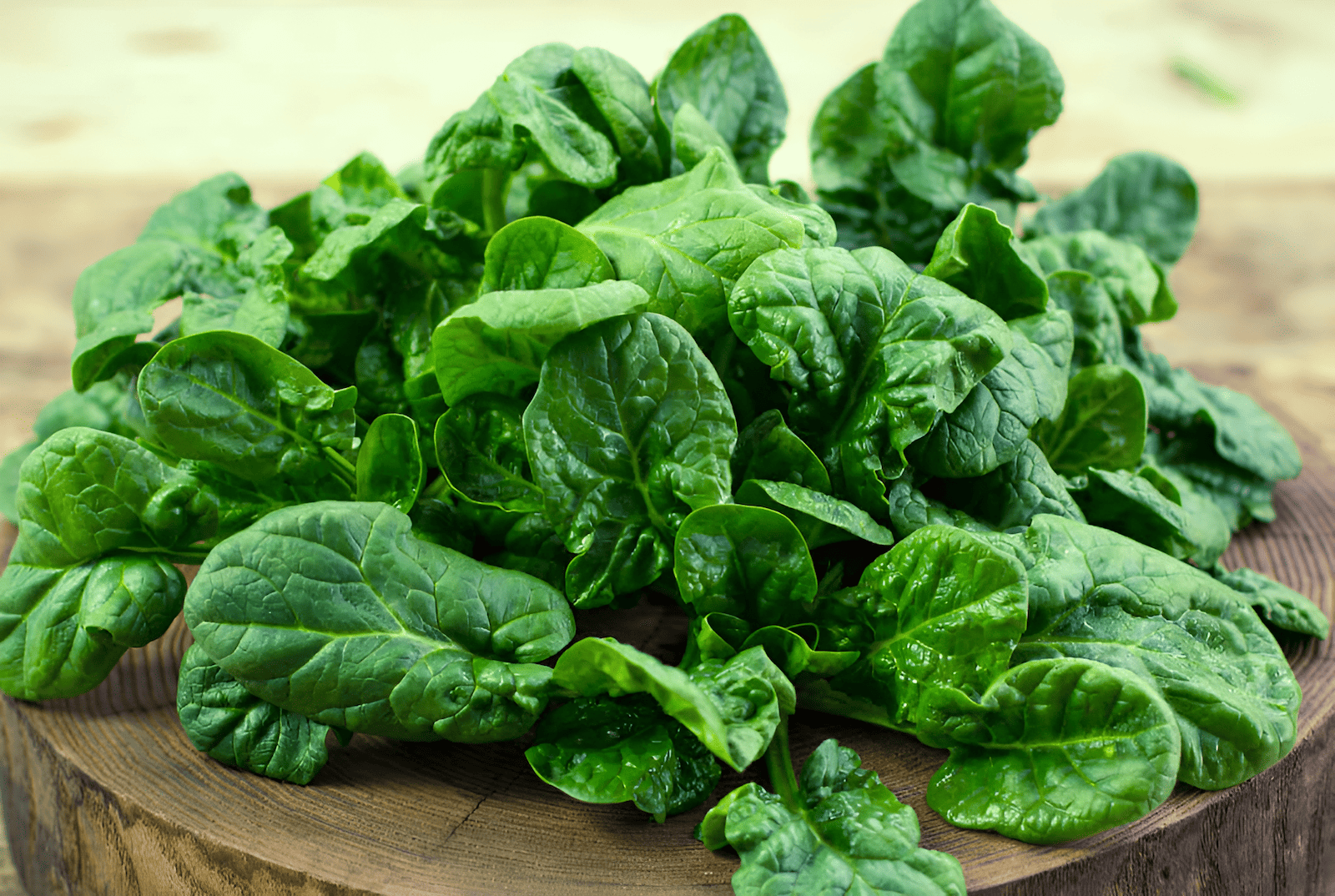
Planting: For optimal growth, spinach should be planted at the right time of year. As a cool-season crop, spinach thrives in spring and fall. For spring planting, sow seeds 3-5 weeks before the last anticipated frost, and for fall planting, sow seeds 5-7 weeks before the first expected frost. Plant seeds about ½ inch deep and space them 1-2 inches apart. If planting seedlings, set them 2-3 inches deep in the soil, spaced 4-6 inches apart. Following these guidelines ensures healthy growth and a successful harvest.
Feed and Weed: To support healthy growth, semi-savoy spinach requires regular feeding and weeding. Common garden weeds like chickweed, dandelions, and lamb's quarters compete for nutrients and water. Regular weeding and mulching help reduce weed growth, retain moisture, and maintain soil fertility. Feed spinach every 4-6 weeks using a balanced fertilizer or organic compost, following application instructions. This ensures the plants receive adequate nutrients for producing healthy, nutrient-rich leaves.
Days Before Harvesting: Semi-savoy spinach typically matures 40-50 days after planting, depending on the variety. Established plants with well-developed roots may have shorter intervals between subsequent harvests. Harvest outer leaves when they are large enough to eat, leaving inner leaves to grow. This approach promotes continuous production of fresh, nutritious leaves throughout the growing season.
Re-Harvesting: Spinach has the unique ability to regenerate after harvest. To encourage regrowth, cut outer leaves while leaving about 3 inches of stem and some inner leaves intact. The height of the cut affects regrowth speed: higher cuts slow regrowth, while lower cuts encourage faster recovery. Consistent watering is essential, and new leaves typically appear within 1-2 weeks. With proper care, spinach can be harvested multiple times during the season.
Sweet and Neat Spinach: Spinach is a versatile crop with a mild, slightly sweet flavor. Proper planting, watering, and harvesting practices enhance its sweetness and ensure high-quality leaves. Maintaining neat rows and weed-free conditions also supports healthy growth, resulting in a productive and visually appealing garden.
Preferred Soil: Semi-savoy spinach thrives in well-draining, fertile soil rich in organic matter. Loamy soil, which balances sand, silt, and clay, retains moisture while allowing excess water to drain, promoting healthy root development. Adding compost or well-rotted manure improves soil structure, fertility, and water retention, supporting plant growth. Maintain a soil pH of 6.0-7.0 for optimal nutrient availability. Soil testing before planting helps determine pH and nutrient levels, allowing for necessary adjustments to create ideal growing conditions.
Size of Plant: A mature semi-savoy spinach plant typically grows 6-12 inches tall and 4-6 inches wide, depending on the variety and growing conditions. It produces numerous stalks with both outer, larger leaves and inner, smaller leaves. Harvesting young, tender leaves ensures the best flavor and texture. If left to bolt, spinach develops greenish-yellow flowers and seeds, which can be saved for future planting. Bolting occurs after 50-60 days of growth, often triggered by increased daylight and warmer temperatures, and can affect leaf taste and texture.
With flat, smooth leaves, smooth-leaf spinach varieties are perfect for baby spinach salads and are easier to clean than savoy or semi-savoy types. Popular varieties include:

Time of Year to Plant: Smooth leaf spinach is best planted during the cool seasons of spring and fall. For spring planting, sow seeds 3-6 weeks before the last anticipated frost. For fall planting, sow seeds 6-9 weeks prior to the first expected frost. Seeds should be planted at a depth of 1/2 inch, with transplants spaced about 12 inches apart to allow room for growth. To protect young plants from frost damage, use material frost covers, which ensure healthy development even in harsh weather.
Suggested Fertilizers: Proper fertilization is crucial for smooth leaf spinach to thrive. A range of fertilizers, including water-release and time-release options, can meet the plant’s nutrient needs. Water-release fertilizers dissolve quickly, providing an immediate nutrient boost, ideal for addressing deficiencies or promoting rapid growth. Time-release fertilizers, on the other hand, slowly deliver nutrients over time, ensuring consistent support throughout the plant’s life cycle. These fertilizers enhance root development, nutrient uptake, and overall plant health, leading to a more abundant harvest. By understanding the specific needs of smooth leaf spinach, gardeners can select the appropriate fertilization method for a successful crop.
Days to Maturity: Smooth leaf spinach typically matures in 45-55 days from planting, depending on the variety. Different varieties may exhibit unique growth rates, leaf textures, and flavors, providing options for diverse preferences and climates. Ensuring optimal sun and water exposure throughout the growing period helps maximize yields and quality.
Regrow Capability: Smooth leaf spinach has an excellent ability to regrow after harvesting. To promote new growth, harvest mature outer leaves while leaving 1-2 inches of the stalk intact. This leftover portion contains dormant buds, which will sprout new leaves when provided with adequate sunlight and moisture. Avoid damaging the plant’s central growing point to maintain its productivity. With proper care, smooth leaf spinach can produce multiple harvests in a single growing season.
Sweetness to Bitterness Scale: The flavor of smooth leaf spinach varies between sweet and bitter, influenced by factors such as sugar content, oxalic acid levels, and environmental conditions. Cooler temperatures and ample sunlight enhance sweetness, while stress factors like heat or nutrient deficiencies increase bitterness. Younger leaves are typically sweeter and more tender, while older leaves may develop a stronger, slightly bitter taste. By optimizing growing conditions and selecting the right varieties, gardeners can produce spinach with their preferred flavor profile.
Preferred Soil and Composition: Smooth leaf spinach thrives in well-draining, fertile soil rich in organic matter. Loamy soil with a pH of 6.5-7.5 is ideal, offering proper moisture retention and drainage. Adding compost or well-rotted manure improves soil structure, fertility, and water-holding capacity. Testing soil pH and nutrient levels before planting allows for necessary adjustments to create optimal growing conditions.
Size, Leaves, and Seeds: A mature smooth leaf spinach plant typically grows 6-12 inches tall and 6-8 inches wide, with 15-25 leaves per plant under ideal conditions. Spinach plants are dioecious, producing separate male and female plants. Female plants can produce hundreds of seeds, which mature 4-6 weeks after flowering. Bolting occurs as the plant shifts from leaf production to seed development, often triggered by longer days and warmer temperatures. Harvest seeds once they turn brown to ensure a continuous spinach supply for future planting.
Beet greens are a nutritious and versatile garden green, often overlooked in favor of the root. Packed with vitamins and minerals, the leafy tops can be harvested while the beet root continues to grow, offering a dual-purpose crop. With a mildly sweet, earthy flavor, beet greens can be sautéed, steamed, or added to salads. Popular beet varieties with flavorful greens include:
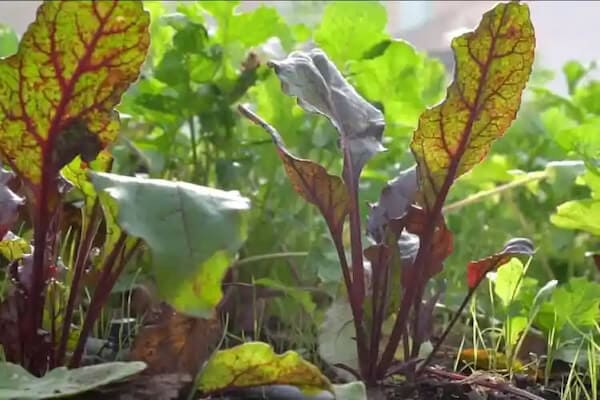
Best Time of Year to Plant: Beet greens thrive in cool weather, making spring and autumn the ideal planting seasons. For spring, sow seeds 3 weeks before the last expected frost, allowing germination before the weather warms. For fall, sow seeds 9 weeks before the first expected frost to ensure plants mature before the cold sets in. While beet roots prefer ample sunlight, beet greens can tolerate partial shade, which can be beneficial during peak heat periods.
Feeding Beet Plants: Beets benefit from balanced fertilization to support vigorous leaf and root growth. Nitrogen-based fertilizers, such as urea or ammonium nitrate, encourage lush foliage, while phosphorus-based options like bone meal aid root development. Potassium-based fertilizers improve plant resilience. Organic alternatives include compost, aged manure, fish emulsion, and seaweed extract. Soil testing is recommended to adjust fertilization programs and avoid over-fertilizing, which can hinder plant health.
Days to Maturity: Beet tops, or greens, are versatile and nutritious, with varying maturity times based on their use:
Beet greens can be harvested at any stage, offering flexibility for culinary use and nutrition.
Re-Grow and Sprout Capability: Beet greens have limited regrowth potential after harvest. To encourage regrowth, trim peripheral foliage about 2 inches above ground, leaving the stem and some leaves intact. Avoid over-harvesting, as it can affect root development. Rotating harvests across multiple plants allows for recovery and ensures a steady supply of greens while preserving root production as the plant’s primary goal.
Optimal Soil for Beetroot: Beetroot thrives in nutrient-rich, well-draining soil with a pH of 6.0 to 7.0. Adding compost or aged manure enhances fertility and drainage, while avoiding dense clay or high-salt soils minimizes root development issues and bitterness in greens. Proper soil preparation ensures strong growth and abundant beet tops.
Plant Size and Development: Fully grown beet plants range from 1 to 2 feet tall with a 12-18 inch spread. Growth stages include:
While sugar beet roots are cultivated for sugar production, their nutrient-rich leaves are also edible and versatile.
Beet Leaves per Plant: Beet plants produce 8-12 leaves each, depending on the variety and growing conditions. Leaves are thick, glossy, and deep green, measuring up to 2 feet in length. Rich in vitamins A and K, calcium, iron, and antioxidants, beet leaves are a valuable dietary addition.
Beet Seeds per Plant: Each beet plant can yield 50-200 seeds, depending on the variety and conditions. Seeds are small, oval, and reddish-brown, encased in pods that turn brown when mature. Stored in a cool, dry place, seeds remain viable for years, allowing gardeners to save them for future planting.
Swiss chard offers vibrant colors and tender leaves, making it a standout in the garden. Popular varieties include:
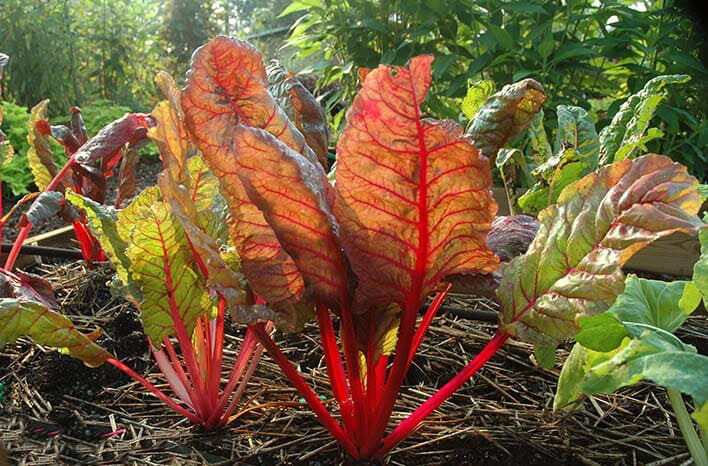
Optimal Planting Times for Chard: Chard thrives in cool seasons, making spring and fall the best times to plant. For spring, sow seeds 2-4 weeks before the last expected frost, and for fall, plant seeds 6-8 weeks before the first frost. This ensures chard experiences the cooler temperatures it needs to grow successfully.
Fertilization Needs: Chard benefits from a balanced fertilizer with an N-P-K ratio of 14-14-14. Apply fertilizer as per package instructions during planting and again mid-season to provide essential nutrients for strong and healthy growth.
Time to Maturity and Regrowth: Swiss chard typically matures within 50-60 days from planting, though this may vary depending on the variety. For continuous harvests, cut outer leaves 3.5 inches above the soil, leaving the stem and some inner leaves intact. Ensure the plant remains well-watered, and new leaves should begin to grow within 1-2 weeks.
Soil Requirements: Swiss chard prefers fertile, well-draining soil with a pH of 6.5 to 7.5. To enhance fertility and drainage, amend the soil with compost, compost tea, or aged chicken manure, which provides high nitrogen content. These amendments help create ideal conditions for robust growth.
Plant Size and Yield: Depending on the variety, Swiss chard can grow up to 2-3 feet tall and 1-2 feet wide. Each plant typically produces 22-33 leaves under optimal growing conditions, offering a plentiful harvest of nutritious greens.
Seed Saving: If you wish to save seeds for future planting, note that a single Swiss chard plant can yield over 500 seeds once it bolts and flowers. Proper care and attention to your chard plants will ensure a bountiful harvest and seed collection for future gardening seasons.
Kale is a nutrient-dense leafy green and a popular choice for home gardens. Various kale varieties offer unique flavors and textures:
Curly kale is known for its ruffled, dark green leaves and mildly bitter flavor, making it perfect for salads, stir-fries, and smoothies. Popular curly kale varieties include:
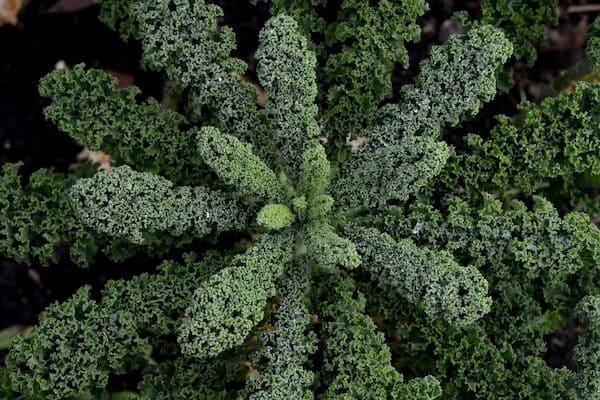
Commonly referred to as "dinosaur kale" or "Tuscan kale," Lacinato kale is distinguished by its long, narrow, and slightly wrinkled leaves. It offers a sweeter and more delicate flavor compared to curly kale, making it a favorite in a variety of dishes. Lacinato kale, also known as black kale, is prized for its dark blue-green, textured leaves and rich taste. Popular varieties of Lacinato kale include:
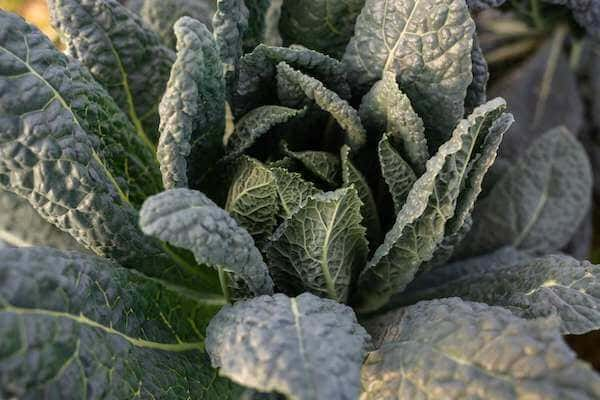
Red Russian kale is easily recognized by its flat, fringed leaves and vibrant red-purple stems. The leaves have a mild, sweet flavor, making them ideal for fresh salads or sautéed dishes. This variety features slightly gray-green leaves with a unique reddish-purple hue that adds visual appeal to any dish or garden. Popular Red Russian kale varieties include:

Kale: A Cool-Season Favorite
Kale thrives in cooler temperatures, making it a perfect crop for spring and fall. For spring planting, sow seeds 4-8 weeks before the last expected frost. For fall planting, sow seeds 6-8 weeks before the first expected frost to ensure the crop matures in optimal conditions.
Fertilizing Kale:
To promote healthy growth, use a balanced fertilizer with an N-P-K ratio of 10-10-10. Apply as directed on the package to provide essential nutrients for your kale plants.
Growth and Maturity:
Red Russian kale typically matures in 50-70 days from seed to harvest, though this timing may vary depending on the specific variety and growing conditions.
Flavor Profile:
Red Russian kale is known for its mildly sweet and nutty flavor with a slight hint of bitterness. Cooler temperatures and consistent moisture enhance its sweetness, and frost exposure can make it even sweeter.
Soil Requirements:
This variety prefers well-draining, fertile soil with a pH between 6.0 and 7.0. Amending the soil with compost or aged manure improves fertility and drainage, creating an ideal environment for kale to thrive.
Plant Size and Yield:
Red Russian kale plants can grow 2-3 feet tall and 1-2 feet wide, depending on the variety. Each plant typically produces 25-35 leaves, though yield may vary based on growing conditions.
Seed Saving:
If you wish to save seeds, know that a single Red Russian kale plant can produce over 100 seeds, ensuring a continuous supply for future planting seasons.
Choosing the Perfect Greens for Your Garden:
Selecting the right greens for your garden depends on your personal preferences, climate, and available space. Experimenting with various varieties can help you discover new flavors, textures, and growth patterns. Factors such as soil type, sunlight availability, and culinary preferences should guide your choices.
Planting a diverse range of greens allows for a continuous harvest throughout the growing season, providing options for fresh salads, smoothies, and cooked dishes. By exploring the world of leafy greens, you’ll enhance your garden’s productivity and beauty while offering your family a healthy, sustainable food source. Happy gardening!
Ready to transform your land into a high-yield, sustainable farm? Let Crop Circle Farms design and build a custom, low-impact, and water-efficient farm tailored to your needs. Double your income and cut your costs in half! Contact Us
Help us expand our mission to revolutionize agriculture globally. We are seeking partners to implement Crop Circle Farms to feed people in need. Together, we can build scalable food production systems that save water, reduce costs, and feed thousands of people. Contact Growing To Give